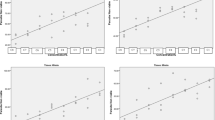Abstract
Acanthamoeba is a free-living opportunistic protozoan parasite that is found in diverse environments. It can cause keratitis, mostly related to inappropriate use of contact lenses, as well as life threatening diseases including encephalitis, disseminated sinusitis, and skin ulcers. This study investigated morphological changes and fine structures of the cyst form of Acanthamoeba spp. after treatment with effective microorganisms (EM™) using light and scanning electron microscopies. Acanthamoeba cysts treated with 1:2, 1:4, 1:6, and undiluted EM™ showed higher percentages of non-viable cysts than those treated with 1:8, 1:10, 1:100, 1:200, and 1:400 EM™ and at 5 days post-treatment developed from cystic stage to trophozoite stage. Acanthamoeba cysts treated at concentrations of 1:2, 1:4, 1:6, and undiluted EM™ exhibited cytoplasmic clumping and shrinkage of amoeba cells away from cyst walls. The effective EM™ concentration lethal to Acanthamoeba spp. cyst could provide information to monitor the environmental control system.




Similar content being viewed by others
References
Bowers B, Korn ED (1968) The fine structure of Acanthamoeba castellanii. I. The trophozoite. J Cell Biol 39:95–111
Bowers B, Korn ED (1969) A fine structure of Acanthamoeba castellanii II. Encystment. J Cell Biol 41:786–805
Byers TJ (1979) Growth, reproduction, and differentiation in Acanthamoeba. Int Rev Cytol 61:283–338
Callicott JH Jr (1968) Amebic meningoencephalitis due to free-living amebas of the Hartmannella (Acanthamoeba)-Naegleria group. Am J Clin Pathol 49:84–91
Cerva L, Novak K (1968) Amoebic meningoencephalitis: 16 fatalities. Science 160:92
De Jonckheere J, van de Voorde H (1976) Differences in destruction of cysts of pathogenic and nonpathogenic Naegleria and Acanthamoeba by chlorine. Appl Environ Microbiol 31:294–297
EM Technology (1998) Effective microorganisms for a sustainable agriculture and environment, EM Tech Product
Fowler M, Carter RF (1965) Acute pyogenic meningitis probably due to Acanthamoeba spp. a preliminary report. Br Med J 5464:740–742
Higa T, James P (1994) Beneficial and effective microorganisms for a sustainable agriculture and environment. International Nature Farming Research Center, Atami, Japan, p 7
Hirukawa Y, Nakato H, Izumi S, Tsuruhara T, Tomino S (1998) Structure and expression of a cyst specific protein of Acanthamoeba castellanii. Biochim Biophys Acta 1398:47–56
Khan NA (2006) Acanthamoeba: biology and increasing importance in human health. FEMS Microbiol Rev 30:564–595
Khunkitti W, Lloyd D, Furr JR, Russell AD (1998) Acanthamoeba castellanii: growth, encystment, excystment and biocide susceptibility. J Infect 36:43–48
Martinez AJ, Visvesvara GS (1997) Free-living, amphizoic and opportunistic amebas. Brain Pathol 7:583–598
Meisler DM, Rutherford I, Bican FE, Ludwig IH, Langston RH, Hall GS et al (1985) Susceptibility of Acanthamoeba to surgical instrument sterilization techniques. Am J Ophthalmol 99:724–725
Sangakkara UR (2002) The technology of effective microorganisms-case studies of application. Royal Agricultural College, Cirencester, UK
Szymanski N, Patterson RA (2003) Effective microorganisms (EM) and wastewater systems in future directions for on-site systems: best management practice. In: Patterson RA, Jones MJ (eds) Proceedings of on-site’03 conference. Armidale, NSW, Australia, Lanfax Laboratories, pp 347–354
Visvesvara GS (1980) Free-living pathogenic amoebae. In: Lennette EH, Balows A, Hausler WJ, Truant JP (eds) Manual of clinical microbiology, 3rd edn. American Society for Microbiology, Washington, D.C, pp 704–708
Acknowledgments
We gratefully acknowledge the help and support provided by the staff of the Department of Parasitology, Faculty of Medicine, Siriraj Hospital, Mahidol University. This work was partially supported for publication by the China Medical Board, Faculty of Public Health, Mahidol University, Bangkok, Thailand (Usa Lek-Uthai).
Author information
Authors and Affiliations
Corresponding author
Rights and permissions
About this article
Cite this article
Sampaotong, T., Lek-Uthai, U., Roongruangchai, J. et al. Viability and morphological changes of Acanthamoeba spp. cysts after treatment with Effective microorganisms (EM). J Parasit Dis 40, 369–373 (2016). https://doi.org/10.1007/s12639-014-0511-x
Received:
Accepted:
Published:
Issue Date:
DOI: https://doi.org/10.1007/s12639-014-0511-x




